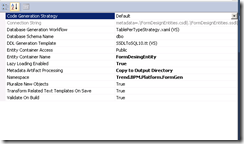To send message properties to the server.
1: var svc = new GPServiceFactory().GetInboxService();2: using (new OperationContextScope(((IClientChannel)svc))) {3: OperationContext oc = OperationContext.Current;4: HttpRequestMessageProperty httpRequestProperty = null;5: if (oc.OutgoingMessageProperties.ContainsKey(HttpRequestMessageProperty.Name)) {6: httpRequestProperty =7: oc.OutgoingMessageProperties[HttpRequestMessageProperty.Name]8: as HttpRequestMessageProperty;9: }10:11: if (httpRequestProperty == null) {12: httpRequestProperty = new HttpRequestMessageProperty();13: }14: httpRequestProperty.Headers.Add("ClientTimeZone", param["TimeZone"]);15: oc.OutgoingMessageProperties[HttpRequestMessageProperty.Name] = httpRequestProperty;16: return svc.GetWorkitemsInQueue(appId, UserId, queueName, 1000, 1);17: }
To retrieve properties
1: Dictionary<String, String> param = null;2: try {3: if (OperationContext.Current.IncomingMessageProperties.Keys != null) {4: param = new Dictionary<string, string>();5: foreach (var key in (OperationContext.Current.IncomingMessageProperties.Keys)) {6: if (System.ServiceModel.OperationContext.Current.IncomingMessageProperties[key] is HttpRequestMessageProperty) {7: var p = OperationContext.Current.IncomingMessageProperties[key] as HttpRequestMessageProperty;8: foreach (string k in p.Headers.AllKeys) {9: if (k.Equals("timezone", StringComparison.OrdinalIgnoreCase)) {10: string v = p.Headers[k].StartsWith("+") ? p.Headers[k].Substring(1) : p.Headers[k];11: param.Add("TimeZone", v);12: }13: else {14: param.Add(k, p.Headers[k]);15: }16: }17: }18: }19: }



